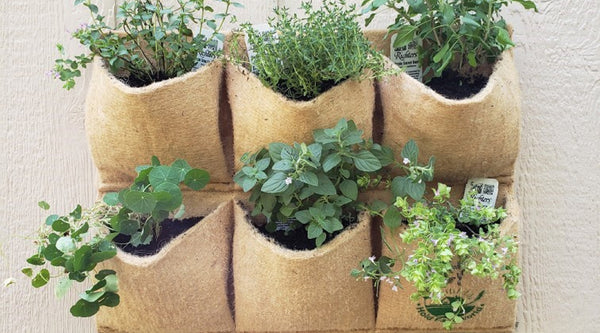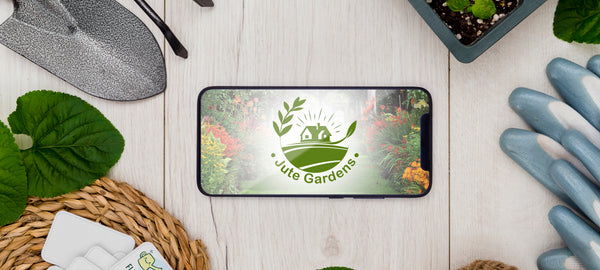
Best Plants for a Vertical Garden
There's nothing quite like having your own garden where you can grow delicious fruits and vegetables the entire family can enjoy. With rising gas prices, more people are searching for ways to decrease costs while making sustainable choices. Many choose to fill their backyards will row after row of vibrant and beautiful plants, but what about those in urban areas without access to a private or shared outdoor space? Fortunately, even those with minimal space can still experience the joys of gardening thanks to vertical gardens.
The very best plants for a vertical garden are vines, succulents and ferns. Vines grow well up and down a wall. They spread quickly. If you are truly seeking a "living wall" design, vines are a great option. Succulents are popular and a good fit for vertical gardens because they don't require a lot of water and they have shallow roots. Ferns are easy to grow and have a tendency to cover large areas quickly. But quite honestly there are many, many options for vertical gardens. To see a list of the "best plants for a vertical garden" please keep reading.
Vertical gardens offer an excellent opportunity to grow a garden in even the smallest spaces, but you may wonder which plants you can grow with this unique setup. If you're ready to decrease your carbon footprint while increasing your quality of life, keep reading to see the wide variety of plants you can grow, no matter how small your living space, with a vertical garden.
What Is A Vertical Garden?
A vertical garden is, just as the name suggests, a form of gardening utilizing vertical space instead of horizontal. These types of beds are the perfect option for those with limited space and work well both indoors and out. Everyone from apartment dwellers to multi-billion dollar companies utilizes vertical gardens for aesthetic and functional purposes, thanks to their beauty and simplicity of use. There are many benefits to choosing this space-saving option, including the following:
Heartier Harvests
Vertical gardens allow you to maximize your available space, allowing you to enjoy heartier and more plentiful harvests and fuller, more bountiful plants.
Physically Easier
If you've spent more than a few minutes tending to a traditional garden, you know the back and knee pain involved. Bending over to plant, pick, and maintain your garden can wreak havoc on your joints, which is why vertical gardens are such a popular option for those looking for a more comfortable planting alternative.
Healthier Plants
Vertical gardens provide a myriad of health benefits to your plants since they don't have to sit on the ground and be exposed to the disease. The upward growth encourages air circulation, allowing your plants to maintain optimal moisture levels and reduce the risk of developing fungi. Additionally, since your plants are vertically stacked, it's easier for you to see any pests or diseases affecting them before the problem progresses.
Better Sun Exposure
Because of the positioning in a vertical garden, your plant's leaf surfaces has better sun exposure, allowing for greater photosynthesis and better overall health.
Best Plants For Vertical Garden
Vegetables
One of the most popular reasons people choose to grow their own gardens is to grow nutritious vegetables at home. With inflation hitting an all-time high, produce prices have increased by over 10%, an upward trend with no end in sight. Growing your own vegetables will help you save money, giving you more breathing room and keeping your wallet happy.
Using a vertical garden to grow your own vegetables is also a great way to decrease your carbon footprint and make sustainable choices. Since many of the plants you grow have seeds you can use again and again, you can end up saving hundreds, if not thousands, of dollars every year simply by utilizing a vertical garden. Here is a list of vegetables that thrive in a vertical garden and are packed with nutrition that will help keep you and your family happy and healthy.
- Carrots
- Beens
- Garlic
- Tomatoes
- Mini cucumbers
- Mini eggplant
- Kale
- Cabbage
- Swiss Chard
- Mustard greens
- Leaf lettuce
- Spinach
- Romaine lettuce
- Squash
- Peas
Fruits
Fruits are an excellent way to pack your diet with nutrients and antioxidants, plus they're undoubtedly delicious. Vertical gardens allow you to grow your own juicy and mouthwatering fruits at home, so you can enjoy their sweetness whenever you'd like. Fruits that grow well in a vertical garden include:
- Strawberries
- Honeydew
- Golden midget watermelon
- Cantaloupe
- Grapes
- Passion fruit
- Kiwi
Herbs
Herbs are one of the best ways to make every recipe delicious, delivering unbeatable flavor to every bite. One of the best parts about growing herbs is the small amount of space they need to thrive, making them an ideal choice for vertical gardens. Whether you love to use herbs in recipes or enjoy their aromatic fragrance, consider adding one or more of the following herb options to your vertical garden.
- Chives
- Basil
- Oregano
- Stevia
- Bergamont
- Wheat grass
- Thyme
- Sage
- Rosemary
- Parsley
- Mint
- Lemon Grass
- Dill
- Cumin
- Cilantro
Medicinal Plants
Alternative medicine is a popular choice for those seeking to limit the number of chemicals they use in or on their bodies. There are many powerful plant varieties known for their medicinal properties, which can provide much-needed relief for an assortment of issues. Vertical gardens provide you with the opportunity to grow these plants at home, so you can have them available to you whenever necessary. These plants grow well in smaller spaces, making them an excellent addition to your vertical garden.
- Yarrow
- Sweet Woodrow
- Aloe Vera
- Scented geranium
- Patchouli
- Lavender
- Hyssop
- Goldenseal
- Echinacea
- Chamomile
- Catmint
- Calendula
- Borage
How To Grow Plants In A Vertical Garden
If you're ready to grow your own bountiful harvest at home, it's important to understand how to use your vertical garden. Fortunately, these alternative planting options are incredibly easy to use, so everyone, child to adult, can enjoy watching their plants grow.
- To begin, choose a soil that works best with the type of plants chosen. Many soil varieties are available, including those made specifically for vegetables, succulents, and potted plants.
- Once you've chosen your soil, insert it into your vertical garden, filling each section about halfway.
- If you're growing your plants from seeds, place the seed and cover it with another inch of soil. For seedlings with an established root, place the plant in the middle of the container and fill it with soil, being sure not to compact it too hard.
Note* Some plants require you to place rocks or peat beneath the soil to ensure proper drainage. Always check the care instructions before planting for the best results.
- Finally, water your plants being sure to lightly saturate the soil without leaving standing water.
Types Of Vertical Gardens
There are many different types of vertical gardens that are constructed from different materials. Wood is a popular option since it is easy to construct and adds warmth to an interior space. Jute is by far the most sustainable material for a vertical garden and is a lightweight, durable option. Additionally, jute is completely biodegradable and looks stunning in any space.
Frequently Asked Questions
I don't have an outdoor space; can I still have a vertical garden?
Yes! Vertical gardens work well both indoors and out since they only require a small amount of wall space.
Can I grow a variety of plants at the same time?
Yes, you can grow a wide variety of plants simultaneously in a vertical garden. You can plant fruits and vegetables together, providing a versatile and delicious way to increase the number of nutrients you eat.
Can I grow other plants besides edible varieties?
Yes! You can grow virtually any type of plant in your vertical garden, not only ones you can eat. Many people use them to plant their favorite flowers, ivies, succulents, and virtually any small or medium-sized houseplant, creating a stunning living work of art everyone will enjoy.
Are vertical gardens expensive?
While there are many models of vertical gardens available, they are generally very affordable, especially compared to traditional raised planters. Additionally, you can save money by growing your own fruits and vegetables, allowing you to get the most bang for your buck!
Are vertical gardens bulky?
No, the vast majority of vertical gardens are streamlined, only taking up a small amount of space on your wall. Since they utilize the vertical area in your home, you don't have to worry about bulk pots taking up valuable floor space, keeping your house from looking cluttered and messy.
If you're ready to begin growing your own plants, consider adding a beautiful vertical garden to your home. You can save money and experience the unbeatable satisfaction of easily growing stunning foliage without worrying about taking up too much space. Jute Gardens is the leading provider of sustainable, eco-friendly home and garden products. We proudly carry a wide variety of vertical gardens constructed with durable and beautiful Jute, a biodegradable and compostable material that won't harm the environment.
We offer vertical gardens in 1-pocket, 3-pocket, 4-pocket, 6-pocket, 9-pocket, and 12-pocket sizes, so you can pick the perfect option to fit your space. Whether you're looking to add stunning foliage to brighten your home or grow your own food and lessen the financial burden, a vertical garden from Jute Gardens is the perfect way to beautifully add life and vibrance to your indoor or outdoor space. When sustainability, functionality, and beauty matter, Jute Gardens is the name you can trust!

